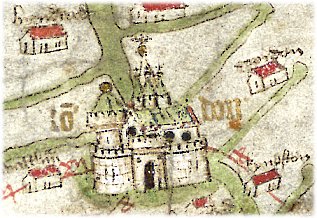Strohm, Peter. Chaucer’s Tale: 1386 and the Road to Canterbury, Viking Penguin Group, New York, 2014 (283pp.28.95)
Geoffrey Chaucer, who died obscurely in 1400, achieved, rather quickly, a posthumous renown in the decade after his death—so quickly as to astonish the literary world of the late Middle Ages. Before his death, he enjoyed reading his poems and stories to a small circle of distinguished and educated friends in the smallish, dirty, rowdy, and plague-ridden city of London, where court intrigue, large-scale corruption, political ambition and general roguery was the life-blood of King Richard II’s bizarre monarchy. He did not think of himself as a poet, however, the idea of “laureation” as an aspect of celebrity not having arisen yet in Western culture. He was just a man living separately from a social climbing wife several rungs up the economic ladder, tied politically to a conniving and crooked London Mayor, and low courtier in the King’s rambunctious and difficult court. He made a precarious living overseeing the Thames Wharf custom’s books in the wool trade and was obliged to turn a blind eye to thievery committed by men more powerful by far than he.
Paul Strohm, who has been J.R.R. Tolkien Professor of English at Oxford University and Garbedian Professor of Humanities at Oxford, has written widely about the literary, social and cultural life of the late Middle Ages. His smartly rendered, entertaining, and beautifully made new book, “Chaucer’s Tale”, focuses on the year 1386, when Chaucer at age 40 lost everything he’d worked a lifetime to gain, and was sent from London to an ignoble, itinerant exile in Kent, where he died fourteen years later, never having returned to London. Ten years after his death, he was as famous as Boccaccio, Petrarch and Dante, and had become the first laureate and literary celebrity in the world to write in vernacular English. Surprising topics bubble up from the depths of Strohm’s book—pub life on the King’s Highway, murder, robbery and prostitution in the gin mills; the Wool Staple, and how it organized monopolies to clobber the English tax system used to finance the King’s stupid wars; scriveners, book-making, literary celebrity, and the birth of English poetry (long before Shakespeare), not to mention court life, beheadings and the daily grind—each and all make appearances in fascinating ways.
Like writers everywhere and always, Chaucer had a terrible day job, working up his poems and stories by candle light in the grim, shuttered digs he was granted by the City politicos over Aldgate. Noisy, smelly, dark and cold, his apartments barely sheltered the poet; yet on he worked, his stories known only to his friends and admirers. When Chaucer’s wife died and John of Gault (The Black Prince) died too, Chaucer was alone and without court favor. Strohm admits that his exile in Kent is poorly documented. We must assume that he was insecure, harried and hungry. Enter the Canterbury Pilgrims.
The Pilgrims were a brilliant literary feat of the imagination. Featuring a varied cast of rogues, pitchmen, scammers, sincere and insincere divines, social snobs, and humble toilers (among many other types), the Canterbury Tales described for the first time social types beneath previous literary notice. Sharing the bawdiness of Boccaccio, Chaucer’s stories parody popular romance, mix genres, mingle narrative action and audience response, inflict strenuous intimacy on the reader, and even use an expletive or two (one Pilgrim dismisses a stumbling tale as, “nat worth a toord.”) Unlike most of his contemporaries, Chaucer was generously inclusive and receptive to different voices. He seized every opportunity to create a kind of cacophony of competing speakers, even creating a hubbub between lowbrow and high, as his group of hearers and tellers anchors a new kind of literature. The line in English literature between Chaucer, Shakespeare and Joyce is clear.
Chaucer’s Tale is a fine little book, a perfect introduction to Chaucer the man and writer, and a generous overview of London in the late Middle Ages.


